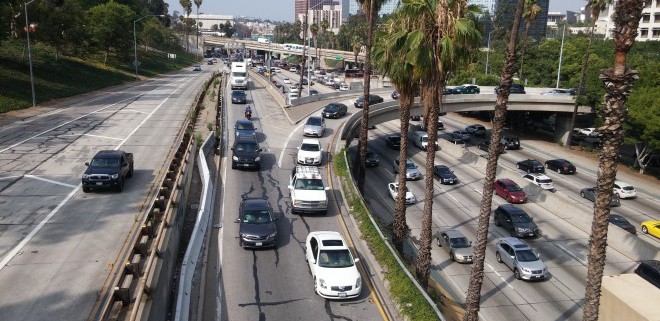Tripartite Summit: Infrastructure, housing, and transport – We can learn a lot from each other
- Auckland, Guangzhou, and Los Angeles have strong and long-standing sister city relationships.
- Auckland Los Angeles share similar challenges, particularly in transportation, the economy, international trade and innovation. Eric Garcetti believes these challenges come from our cities being “victims of our own success”.
- Over the next decade, autonomous vehicles are expected to revolutionise transport. People won’t need to own their own cars, and cities won’t need the carparking infrastructure they have today.
“We have a lot to learn from each other, and we decided to formalise that relationship to improve the economy and the quality of life in each of the three cities.” – Eric Garcetti
While in Auckland, Los Angeles Mayor Eric Garcetti spoke of the strong and long standing relationship between the cities in the Tripartite Economic Alliance, the similar challenges Auckland and Los Angeles are facing, and the opportunities that can come from our longstanding relationship as sister-cities.
Los Angeles has been a sister city with Auckland for 45 years, and with Guangzhou for 35 years. “Two years ago in Guangzhou we realised there was so much we could share with each other, especially in transportation, the economy, international trade and innovation,” Garcetti said.
He believes that local governments are where the rubber hits the road and innovation takes place. “We have a lot to learn from each other, and we decided to formalise that relationship to improve the economy and the quality of life in each of the three cities.”
Although Garcetti acknowledged Auckland and Los Angeles share similar challenges, he believes they come from our cities being victims of our own success. “Both cities are learning from mistakes of the past, and undergoing massive transformation in infrastructure, housing, and transportation,” he said.
“Rents are going up, traffic is increasing. But on the other hand, we have a booming economy. People love Los Angeles – it is the northern capital of Latin America, western capital of the United States, eastern capital of the Pacific. In so many ways, people want to be there because it is such a creative place. We just have to solve what that does to people, so they can have a decent place to live, and not be stuck in traffic.”
Both Los Angeles and Auckland’s current housing affordability problem is driven by a lack of supply. Garcetti has been heavily criticised for removing historic buildings in order to build apartments, however he believes that city planning requires a careful balance of urbanisation and preservation.
Neighbourhoods can be preserved, as long as we put intensification around areas we have put public transportation in place. “It’s a supply and demand issue. You have to put buildings where you’re investing in transit, and in your downtowns,” Garcetti said.
Even more so than Auckland, Los Angeles is defined – and criticised – by its roads, and its transportation problems. Both cities removed their tram and streetcar networks in the 1950s and invested heavily in roading infrastructure.
“We want to have cars and we love cars, and we need to improve our roads, but there’s no space to build new freeways. What we have to do is lay down rail that allows people to get around,” said Garcetti.
Los Angeles residents are strongly supportive of increasing public transport. The city requires two-thirds of the population to vote in favour of tax increase, and yet eight years ago the city agreed to tax themselves a quarter-cent on every dollar of sales to initiate a US$35 billion construction programme.
“We literally have five lines underway, connecting the airport, and you will now be able to go from the skyline to the shoreline – Downtown to Santa Monica, for the first time in sixty years, just like our grandparents used to do,” said Garcetti.
Over the next decade, Garcetti believes that autonomous vehicles will revolutionise transport. Although Los Angeles has excellent roads, in Downtown Los Angeles, 81 per cent of space is taken up by car parking spaces. With autonomous vehicles, people won’t need to own their own cars, and won’t need carparking infrastructure.
“96 per cent of the time, cars are not driven – we own too many of them,” Garcetti said. “Even at peak traffic – which is only 5 per cent of the day – 10 per cent of the roads have cars on them, 90 per cent don’t. It’s a spacing problem, and we’re right on that brink.
Infrastructure, housing, and transportation are challenges that Garcetti believes our cities can work with each other to share ideas and learn. The formal relationship that our sister city relationship and the Tripartite Economic Alliance provides means Los Angeles, Auckland – and Guangzhou – can innovate, grow, and solve these challenges, together.




Leave a Reply
Want to join the discussion?Feel free to contribute!